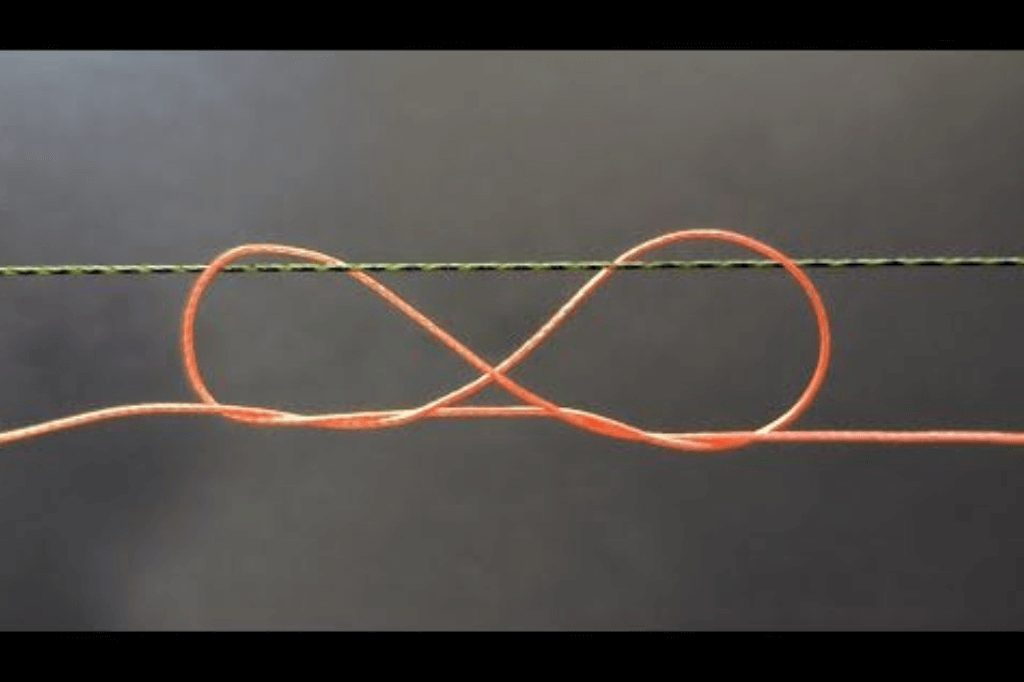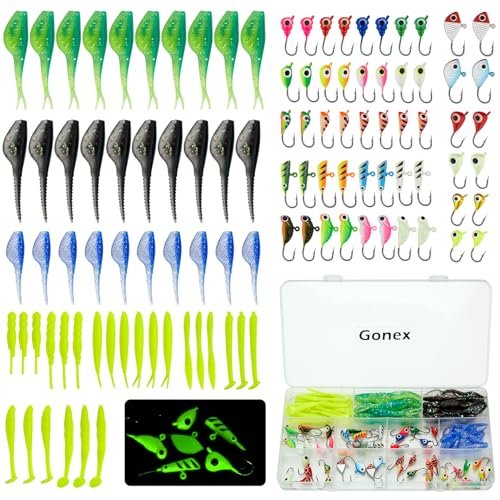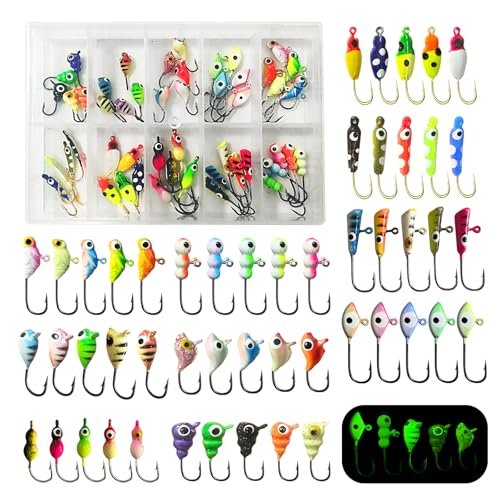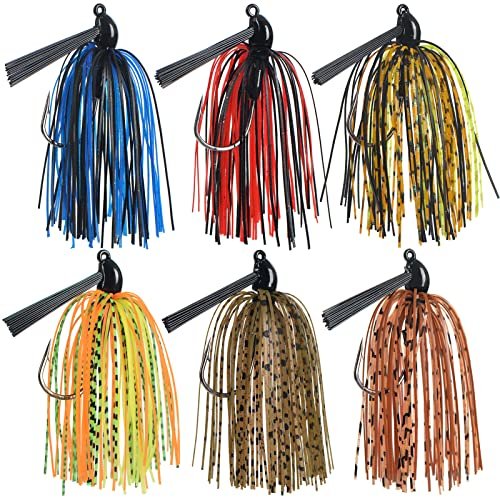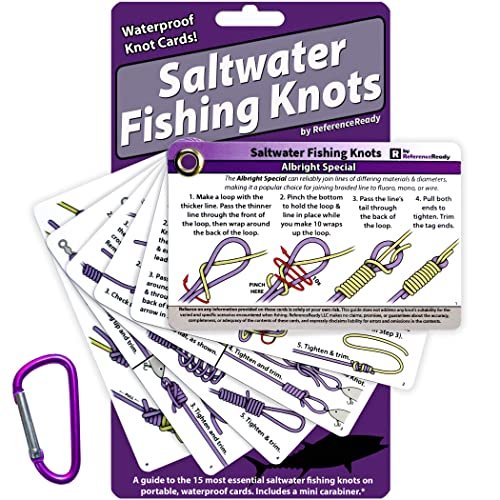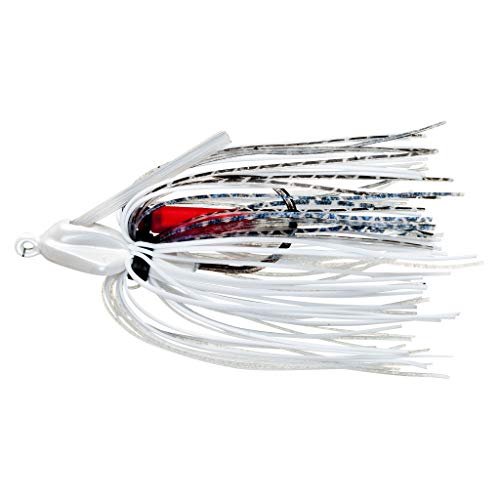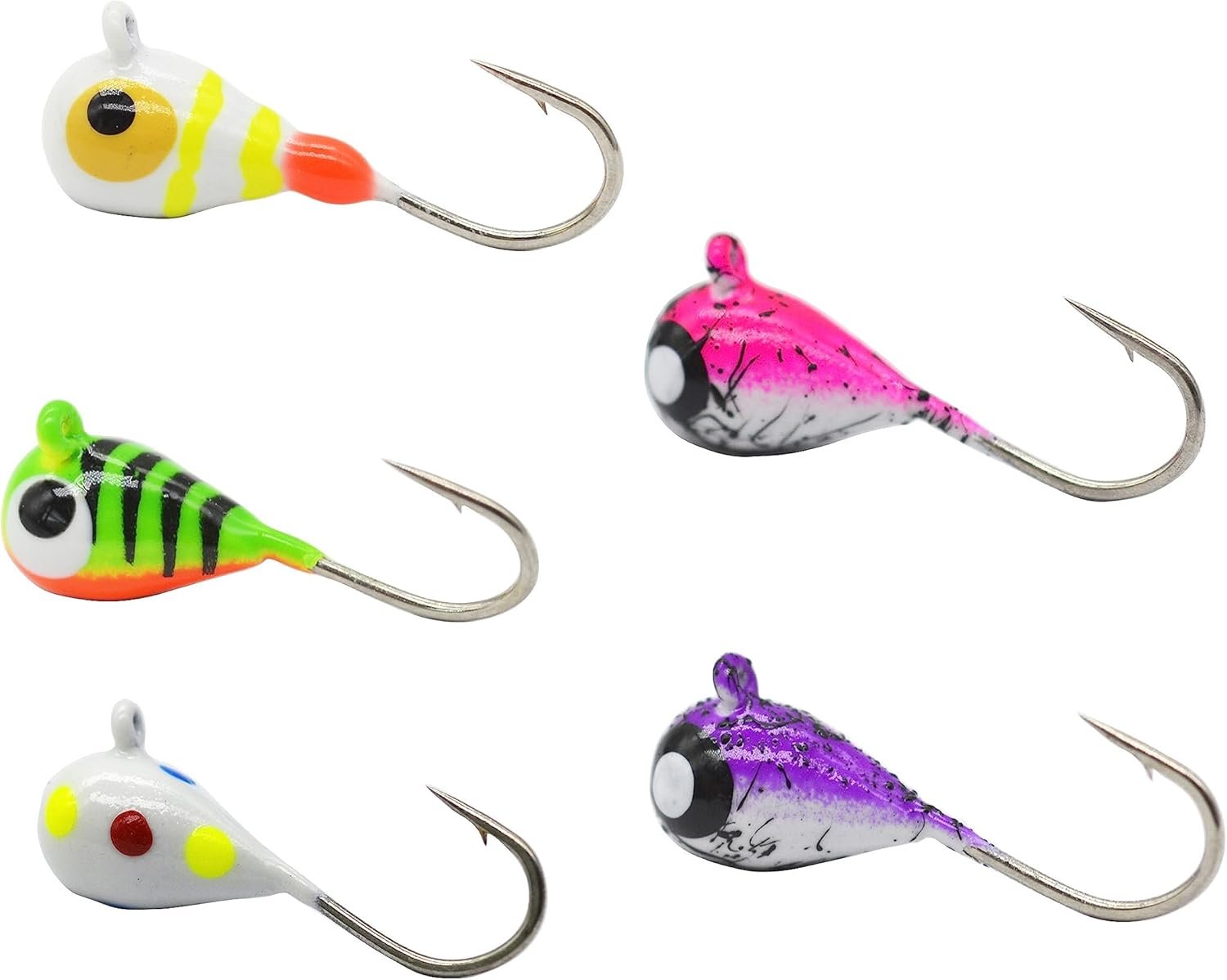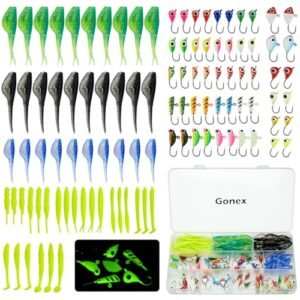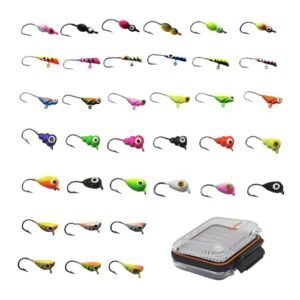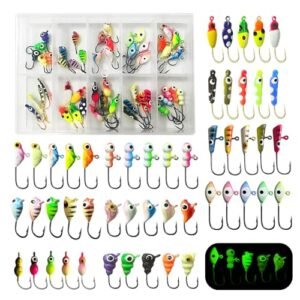Mastering the art of tying fishing lines together is essential for anglers aiming to ensure the strength and durability of their line connections. A secure knot can mean the difference between a great catch and a lost fish. This skill is particularly useful when you need to extend the length of your line, join two different types of line, or when you’re splicing a leader onto your mainline.
By choosing the right knot and practicing the technique, you can maintain the integrity of your line, minimize weak points, and maximize your chances of a successful fishing trip. Properly tied knots retain more line strength, reduce the likelihood of line breaks at critical moments, and enhance the overall fishing experience.
Introduction: How to Tie Two Fishing Lines Together
Knot tying in fishing is a skill that stands between a great day on the water and the one that got away. Mastering this art is essential for every angler. A secure knot can mean the difference between landing the big one or watching your line snap at the worst moment.
Importance Of Reliable Knots
Fishers know that the right knot is critical for success. A reliable knot ensures that your line holds strong when you hook a fish. It also affects casting performance and the overall strength of your fishing line. Let’s dive into why choosing and tying the correct knot can make or break your fishing experience.
- Strength: A well-tied knot won’t weaken the line.
- Durability: Good knots can withstand tough fights with fish.
- Versatility: Different situations call for different knots.
Common Challenges When Joining Lines
Tying two lines together comes with its own set of challenges. Anglers often face issues such as line slippage, weakened knots, or complex tying methods. Understanding these challenges helps in selecting the right knot for a smooth fishing experience.
| Challenge | Impact on Fishing |
|---|---|
| Line Slippage | Loss of fish and bait |
| Weakened Knots | Reduced line strength |
| Complex Tying | Time-consuming; may lead to errors |
Types Of Fishing Lines
Before tying two fishing lines together, let’s explore the Types of Fishing Lines. Each type has unique features. Knowing these will help you choose the right one for your fishing needs.
Characteristics Of Monofilament Lines
Monofilament lines are popular among anglers. Here’s why:
- They are flexible and easy to use.
- These lines stretch under pressure. This can be good or bad, depending on the situation.
- Monofilament lines are less visible in water. Fish find them harder to see.
- They are cheaper than other types of lines.
Advantages Of Braided Lines
Braided lines stand out for several reasons:
- No stretch. This gives you better sensitivity to fish bites.
- They have a longer lifespan than monofilament lines.
- Thinner diameter allows for longer casting.
- Strong, so they can handle bigger fish.
When To Use Fluorocarbon Lines
Fluorocarbon lines are the choice for specific situations:
- Almost invisible underwater. Perfect for clear water.
- They sink faster than other lines. Good for deep water fishing.
- Resistant to abrasions. They don’t wear out easily.
- Less stretch than monofilament. This gives you a clear feel for what’s happening underwater.
Essential Knot Tying Tools
When tying two fishing lines together, using the right tools is key. These tools make the process easier and more effective. Let’s explore the essential knot tying tools you’ll need.
Using A Line Cutter
A line cutter is vital for a clean cut. Clean cuts prevent fraying. Frayed lines weaken the knot. Always choose a sharp and precise line cutter. Many anglers prefer:
- Scissors – Easy to handle and precise.
- Ceramic blades – Stay sharp longer and resist corrosion.
- Nail clippers – Compact and handy for quick trims.
The Role Of Knot-tying Gadgets
Knot-tying gadgets simplify tying complex knots. They are especially useful for beginners. These gadgets guide the line into the correct position. This ensures a strong, reliable knot every time. Popular knot-tying gadgets include:
| Gadget | Use |
|---|---|
| Tie-Fast Knot Tyer | Great for tying Nail Knots. |
| Hook-Eze | Covers hooks during tying, enhancing safety. |
| Line Cutterz Ring | A ring with a blade for easy cutting. |
The Blood Knot Technique
Mastering the blood knot is a skill that elevates your fishing game. It’s a reliable method to connect two fishing lines. This knot maintains the strength of the line. It works well with lines of similar thickness. Let’s learn how to tie a blood knot with a simple step-by-step guide.
Step-by-step Guide To The Blood Knot
- Align the lines: Lay the ends of two lines against each other, overlapping by several inches.
- Twist one end: Wrap one end around the other line five or six times. Push the end back through the loop created near the start of the wraps.
- Repeat with the other end: Now take the other end and wrap it in the opposite direction the same number of times. Pass this end through the same loop, but in the opposite direction.
- Moisten the knot: Wet the lines with saliva or water. This reduces friction and heat.
- Pull tight: Hold both ends of each line. Pull them in opposite directions. The coils should wrap tightly together.
- Trim the ends: Use scissors to trim the ends of the lines close to the knot.
When To Use The Blood Knot
- Similar line diameters: Best for tying lines of similar thickness.
- Strength retention: Use it when line strength is crucial.
- Smooth casting: It creates a smooth knot that passes easily through guides.
- Fly fishing: Ideal for constructing tapered fly-fishing leaders.
Mastering The Double Uni Knot
The Double Uni Knot is a favourite among anglers for its strength and ease of tying. This reliable knot works well for joining lines of similar or different diameters. Its versatility and durability make it a go-to for seamless line connection.
Instructions For The Double Uni Knot
Follow these simple steps to tie a Double Uni Knot:
- Overlap the two lines for several inches.
- Form a loop with one line and wrap it around both lines 6-8 times.
- Pull the tag end to tighten the wraps, forming the first Uni Knot. Ensure it’s snug.
- Repeat the process with the other line, creating a second Uni Knot.
- Now, pull both main lines to slide the Uni Knots together.
- Moisten the knots, pull tight, and trim excess.
With practice, tying a Double Uni Knot becomes quick and effortless.
Comparing Strength With Other Knots
The Double Uni Knot stands out for its impressive strength. When compared to other knots, it offers:
- Better security than the Clinch Knot.
- More reliability than the Blood Knot when mixing line types.
- Equal strength to the Surgeon’s Knot, yet simpler to tie.
Tests show the Double Uni Knot retains much of the line’s original strength. It’s a trusted choice for connecting lines effectively.
The Surgeon’s Knot Method
Connecting two lines while fishing is crucial for a strong setup. The Surgeon’s Knot Method stands out for its strength and simplicity. Below, learn how to tie this essential knot and understand its benefits on the water.
How To Tie The Surgeon’s Knot
Follow these steps to tie a secure Surgeon’s Knot:
- Overlap the two lines for about 6 inches.
- Create a loop where the lines intersect.
- Pass the ends of the lines through the loop twice.
- Pull all four ends to tighten the knot.
- Trim any excess line from the ends.
Benefits Of The Surgeon’s Knot In Fishing
- Easy to tie: Even beginners find this knot simple.
- High strength: It holds well under tension.
- Versatile: It works with different line types and thicknesses.
- Quick to tie: Saves time when changing setups.
- Small profile: The knot is compact and passes through guides smoothly.
Tips For Tying The Albright Knot
Tying the Albright Knot is a skill every angler should master. It’s a strong, reliable connection between two lines of different thicknesses. Perfect for fly fishing or joining a leader to a mainline, it handles the transition smoothly without compromising strength.
Detailed Steps For The Albright Knot
Follow these simple steps to secure your lines:
- Make a Loop: Form a loop in the thicker line.
- Thread the Line: Pass the end of the thinner line through the loop.
- Wrap It Up: Wrap the thin line around itself and the loop 10 times.
- Back Through: Bring the end of the thin line back through the loop.
- Moisten and Pull: Wet the knot, pull both lines to tighten.
- Trim the Excess: Cut the excess thin line close to the knot.
Ideal Situations For The Albright Knot
- Fly Fishing: Attach your leader to a fly line effortlessly.
- Joining Lines: Connect a monofilament leader to a braided line.
- Big Game Fishing: Use it for its strength when targeting larger fish.
Troubleshooting Common Knot Issues
Tying two fishing lines together can be tricky. Knots might slip or break. Let’s solve these problems together under the ‘Troubleshooting Common Knot Issues’ section.
Dealing With Slipping Knots
Slipping knots are annoying. They mean fish can escape. Here’s how to stop them:
- Choose the right knot: Use a Double Uni Knot for most lines.
- Moisten the line: Wet it before tightening. This reduces friction.
- Pull tightly: Ensure both ends are pulled tight for a secure knot.
Preventing Line Breakage At The Knot
Knots can weaken the line, causing it to break. Prevent this by:
- Using a stronger knot: A Surgeon’s Knot adds strength.
- Avoiding sharp pulls: Gentle tension increases knot durability.
- Trimming excess: Leave a small tail after the knot. Not too short!
Follow these tips to keep your knots tight and strong. Happy fishing!
Advanced Knots For Experienced Anglers
Mastering the art of tying fishing lines is crucial for successful angling adventures. Beyond the basics, experienced anglers need advanced knots that hold strong in the toughest conditions. These knots ensure the best connection between lines for a seamless and secure fishing experience.
Exploring The Fg Knot
The FG knot is a favourite among seasoned fishers. Its strength is unmatched when connecting braided line to a leader. This knot is slim and passes through guides smoothly. Here’s how to tie it:
- Hold the leader and braid parallel to each other.
- Wrap the braid around the leader in a series of tight coils.
- Alternate the direction of each wrap for security.
- Finish with a series of half hitches and trim excess line.
Pro tip: Practice makes perfect with the FG knot. Use a tension tool for even pressure during wraps.
When To Use The Bimini Twist
The Bimini Twist is perfect for creating a double line for heavy-duty fishing. It’s known for its 100% line strength retention. Use this knot when targeting big game fish. Steps include:
- Create a loop at the end of the line.
- Twist the loop 20-30 times.
- Hold the twists and spread the loop over your knee or foot.
- Use your free hand to wrap the tag end back up the twists.
- Secure with a few half hitches and trim any excess.
Note: The Bimini Twist is most effective with mono or fluorocarbon lines. Ensure tight and even twists for maximum strength.

Practicing Your Knot Tying Skills
Mastering the art of tying two fishing lines together is crucial for anglers. Strong knots prevent line breaks during a catch. Regular practice ensures knots hold firm in all conditions. Let’s enhance those knot tying skills with a structured approach.
Creating A Routine For Knot Practice
Establishing a daily routine is key to improving knot tying techniques. Consistency turns complex knots into second nature. Begin with simple knots. Progress to more advanced ones as skills improve. Aim for at least 15 minutes of practice each day.
- Start with the Improved Clinch Knot for its simplicity and strength.
- Advance to the Double Uni Knot for connecting lines.
- Practice under different conditions—dry, wet, and with gloves on.
Use various line types and diameters. This prepares anglers for any situation on the water. Track progress in a notebook or digital app. Celebrate milestones to stay motivated.
Resources For Learning And Improving
Many resources are available for learning and refining knot tying skills. Utilize books, videos, and apps designed for anglers of all levels. Seek tutorials that offer clear, step-by-step instructions with visuals.
| Resource Type | Benefits |
|---|---|
| Books | Portable, in-depth guides on various knots |
| Videos | Visual demonstrations for hands-on learning |
| Apps | Interactive tools for practice on the go |
Join online forums or local fishing clubs. Share experiences and learn from others. Always seek feedback on your knots. This ensures continuous improvement and confidence on your next fishing adventure.
Conclusion: The Art Of Knot Tying
The art of knot tying is both a skill and an art form. Mastering it allows anglers to confidently join two fishing lines. This ensures strong connections for successful fishing adventures.
Recap Of Key Takeaways
- Learn different knots for various fishing situations.
- Use the right knot to ensure the strongest link between lines.
- Practice makes perfect. Regular practice improves your knot-tying skills.
Encouragement To Keep Practicing
Knot tying can be tricky at first. But, don’t give up. Each attempt improves your skill. Soon, you will tie knots quickly and easily. This skill makes your fishing trips more enjoyable and successful. Keep practicing, and you will master the art of knot tying.
Frequently Asked Questions
How To Join Two Fishing Lines Together?
To join two fishing lines, use the double uni knot method: overlap the ends, twist each around the other line five times, pull tight to secure the coils, then trim excess line.
How Do You Tie Braided And Mono Fishing Line Together?
To tie braided and mono fishing lines together, use the double uni knot. Start by overlapping the lines, then wrap the mono around the braid five times. Repeat with the braid around the mono, pull tight, and trim excess.
How Do You Tie Two Braided Fishing Lines?
To tie two braided fishing lines together, start by overlapping the ends. Create a loop with each line, then pass the opposite end through its own loop four times. Pull both lines to tighten, securing the knot. Trim excess for a clean finish.
How To Knot Fishing Wire?
Begin by threading the wire through the hook eye and doubling it back. Twist the loop around the standing line five times. Thread the tag end through the loop near the eye, then pull tight. Trim any excess wire from the finished knot.
Conclusion
Mastering the art of connecting two fishing lines is crucial for any angler. With the right techniques, you can ensure your setup is strong and reliable. Whether you’re a beginner or seasoned fisher, practicing these methods will enhance your fishing experience.
Remember, patience and precision are key to achieving the perfect knot. Happy fishing!
